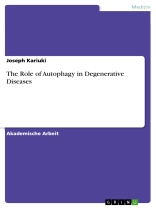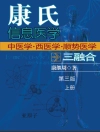Akademische Arbeit aus dem Jahr 2020 im Fachbereich Medizin – Sonstiges, , Sprache: Deutsch, Abstract: Autophagy is a well-developed intracellular breakdown mechanism. Based on the mechanism of cargo transport into lysosomes used by mammals, there are three types of autophagic processes: chaperone-mediated autophagy, microautophagy, and macroautophagy, all of which are referred to as autophagy.
Autophagosomes are double-membrane-bound vesicles that absorb unnecessary or misfolded proteins as well as damaged subcellular organelles and transport them to lysosomes for disintegration. The mammalian target of rapamycin complex 1 (m TORC1), a critical regulator of autophagy, inhibits autophagy at a low baseline level in almost all cells to maintain cellular homeostasis. When m TORC1 is inhibited, autophagy is released in response to many types of
cellular stress, such as food restriction, growth factor withdrawal, or hypoxia, and it is greatly increased to meet high energy demands.
Dynamic interactions between compartments of the autophagic and endocytic pathways are essential for digestion to be completed. As the brain ages, neuron interactions become more prone to irregularities. Autophagy-controlling gene alterations have been associated to a wide spectrum of neurodegenerative illnesses in persons of all ages, which is not surprising. Defects in the autophagy system are seen at various stages in late-onset disorders such as Alzheimer’s disease, amyotrophic lateral sclerosis, and familial Parkinson’s disease, with varying etiology and therapeutic implications.
Joseph Kariuki
The Role of Autophagy in Degenerative Diseases [PDF ebook]
The Role of Autophagy in Degenerative Diseases [PDF ebook]
Cumpărați această carte electronică și primiți încă 1 GRATUIT!
Limba Germana ● Format PDF ● ISBN 9783346606334 ● Mărime fișier 0.6 MB ● Editura GRIN Verlag ● Oraș München ● Țară DE ● Publicat 2022 ● Ediție 1 ● Descărcabil 24 luni ● Valută EUR ● ID 8333091 ● Protecție împotriva copiilor fără












